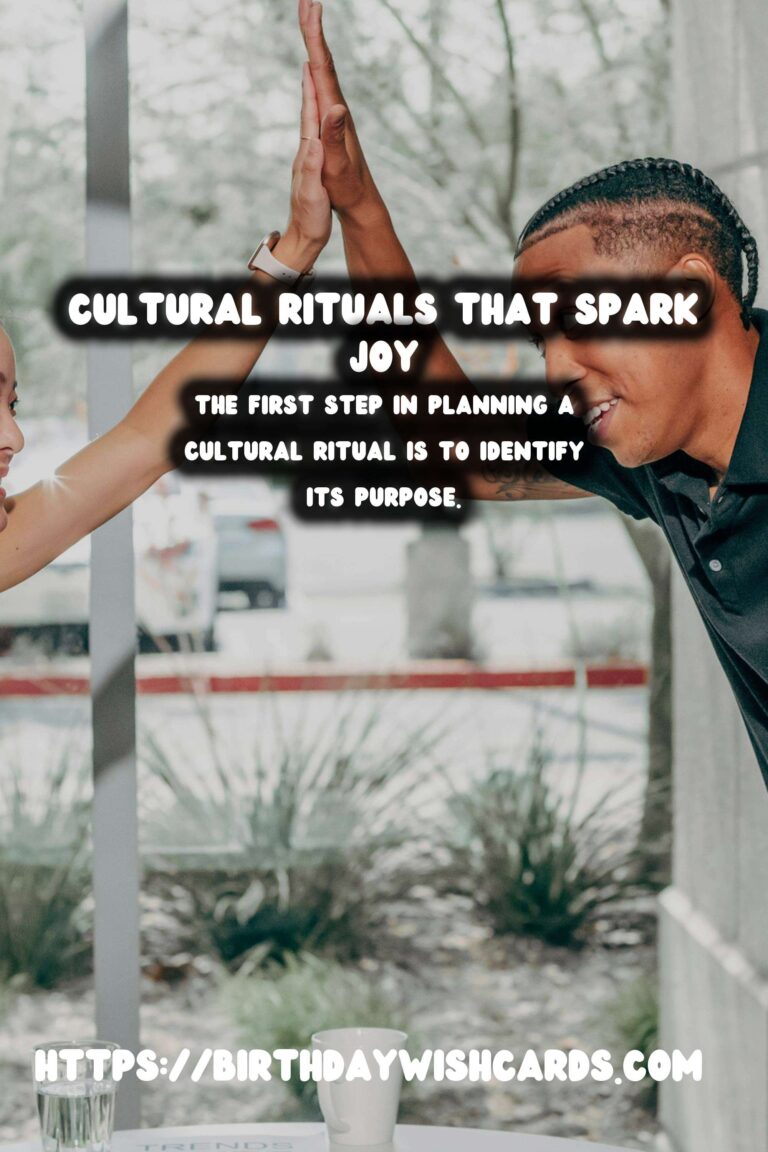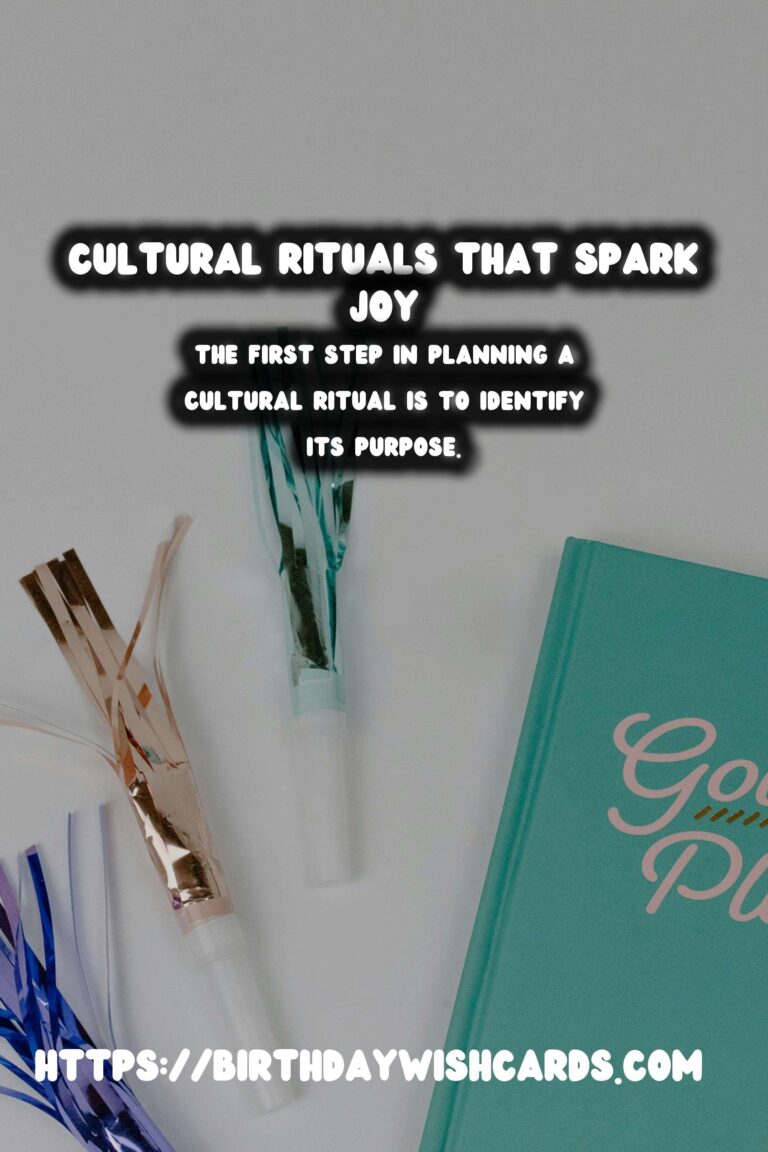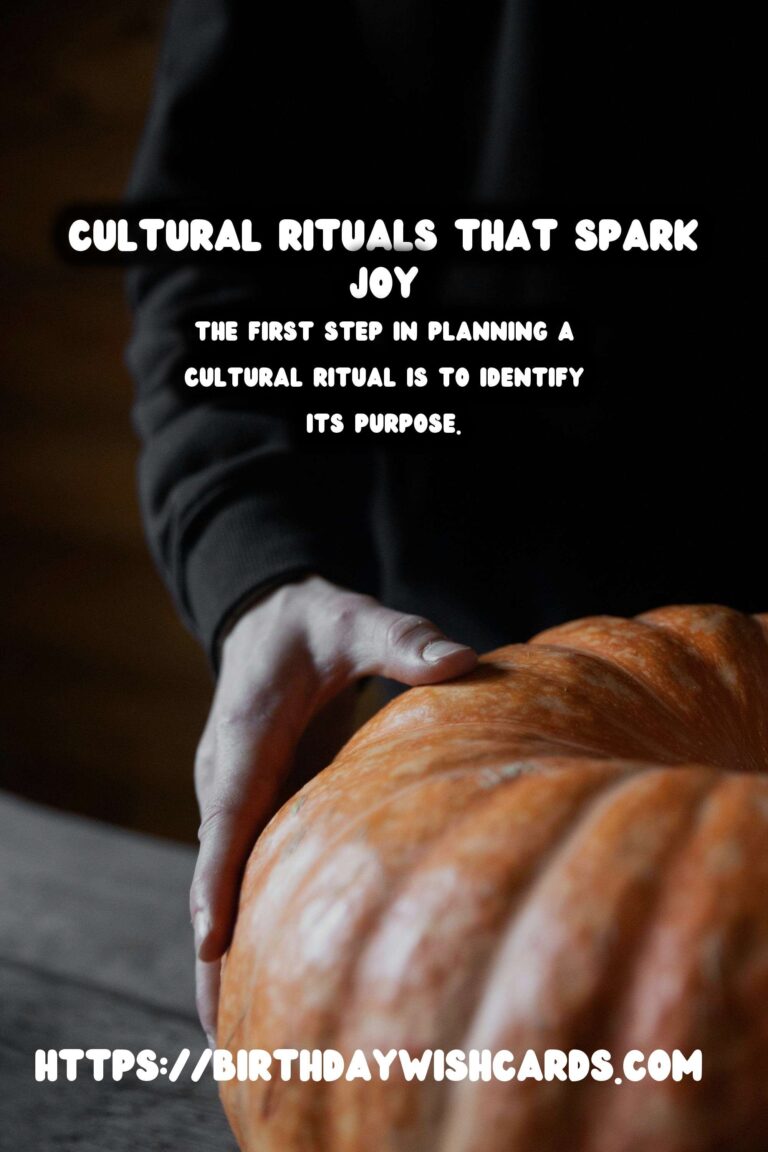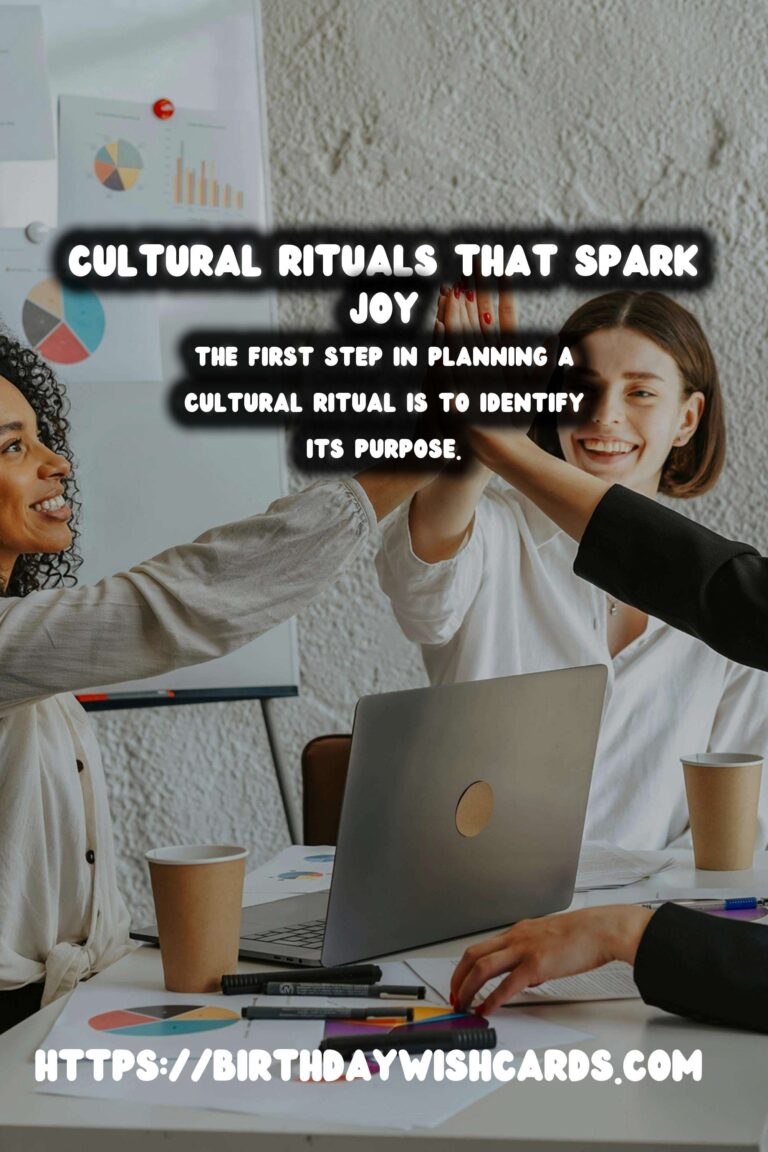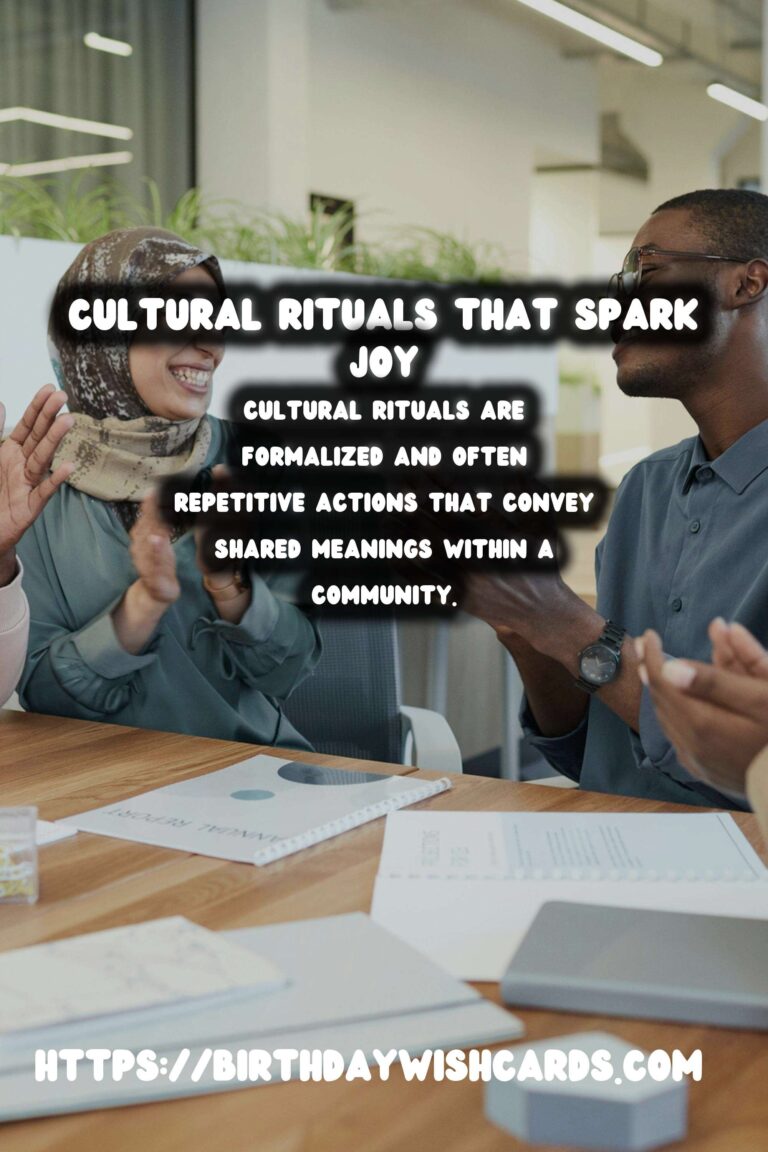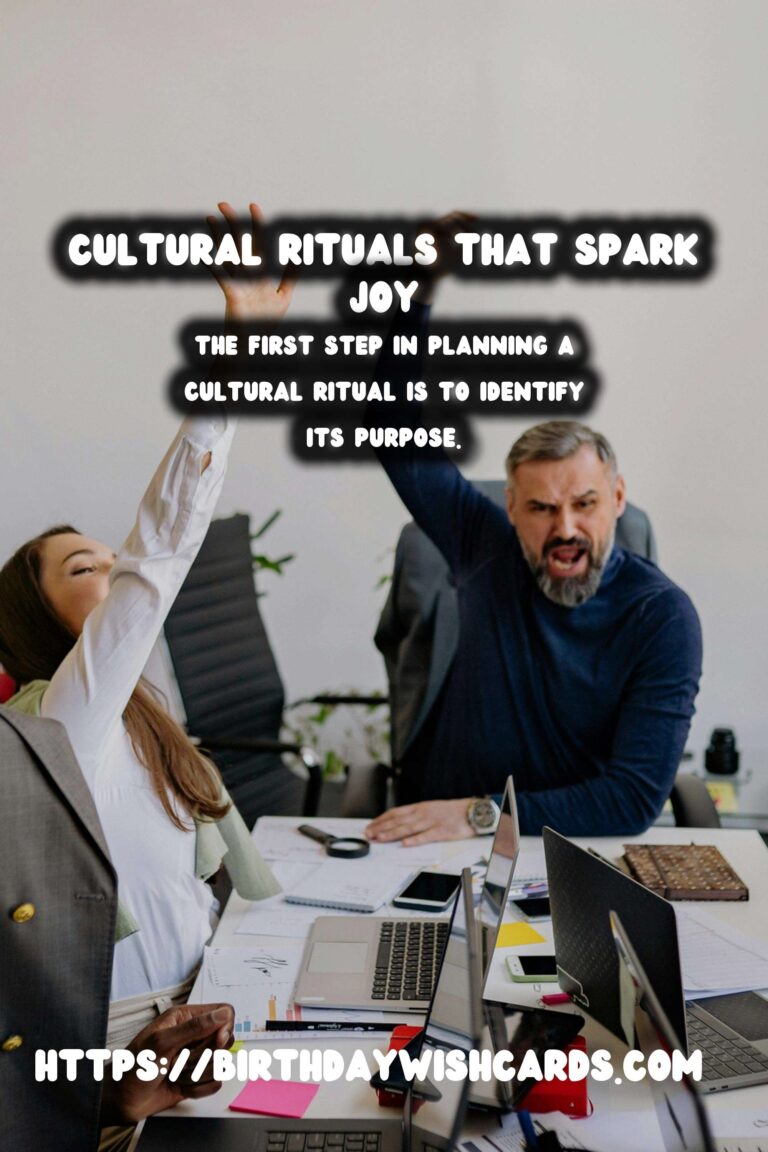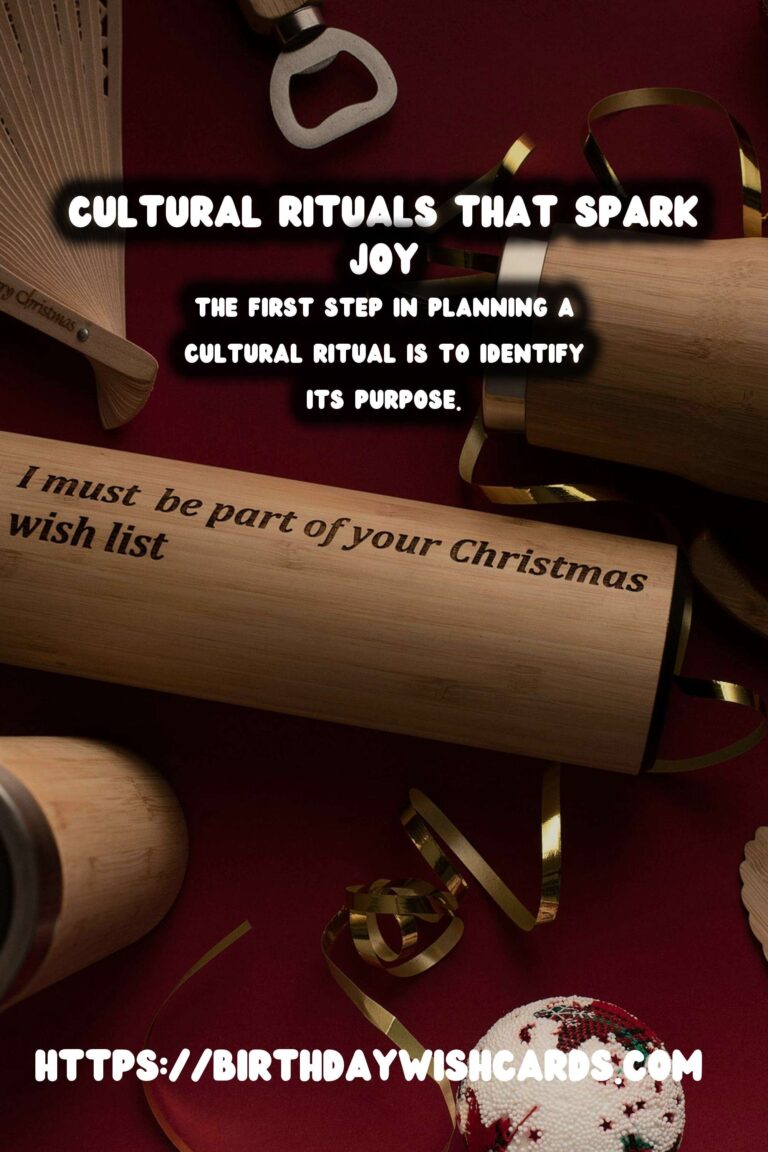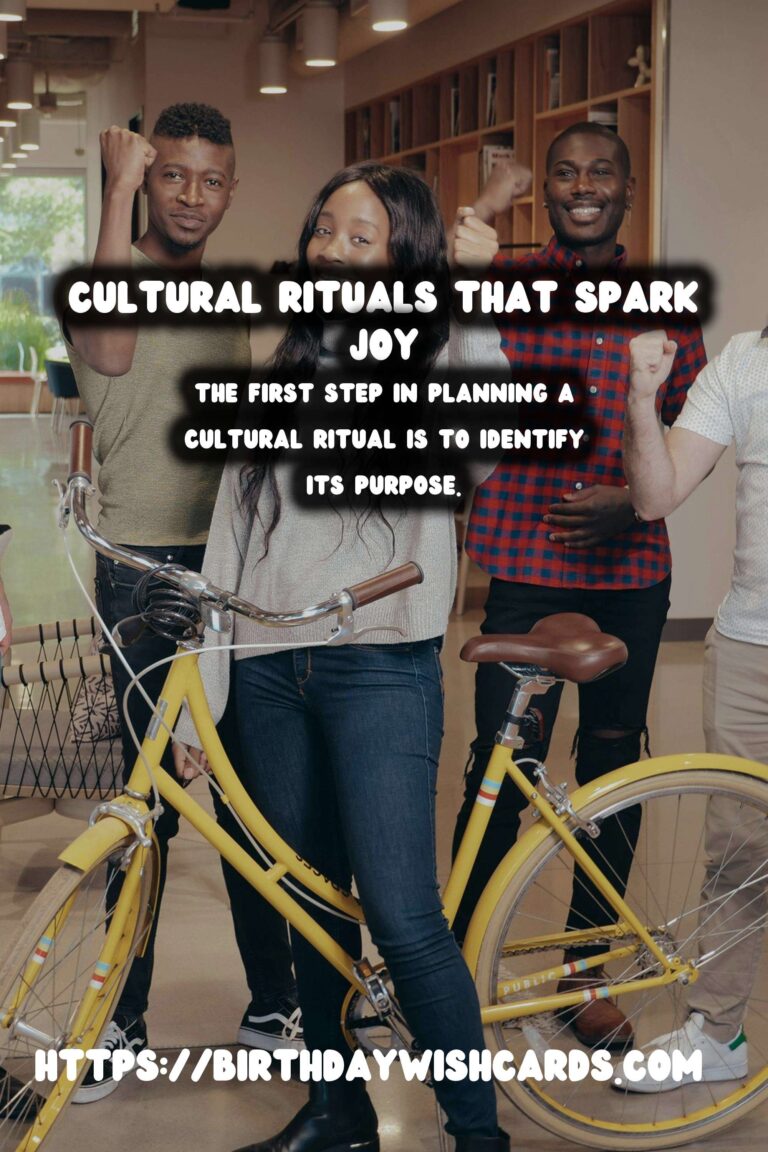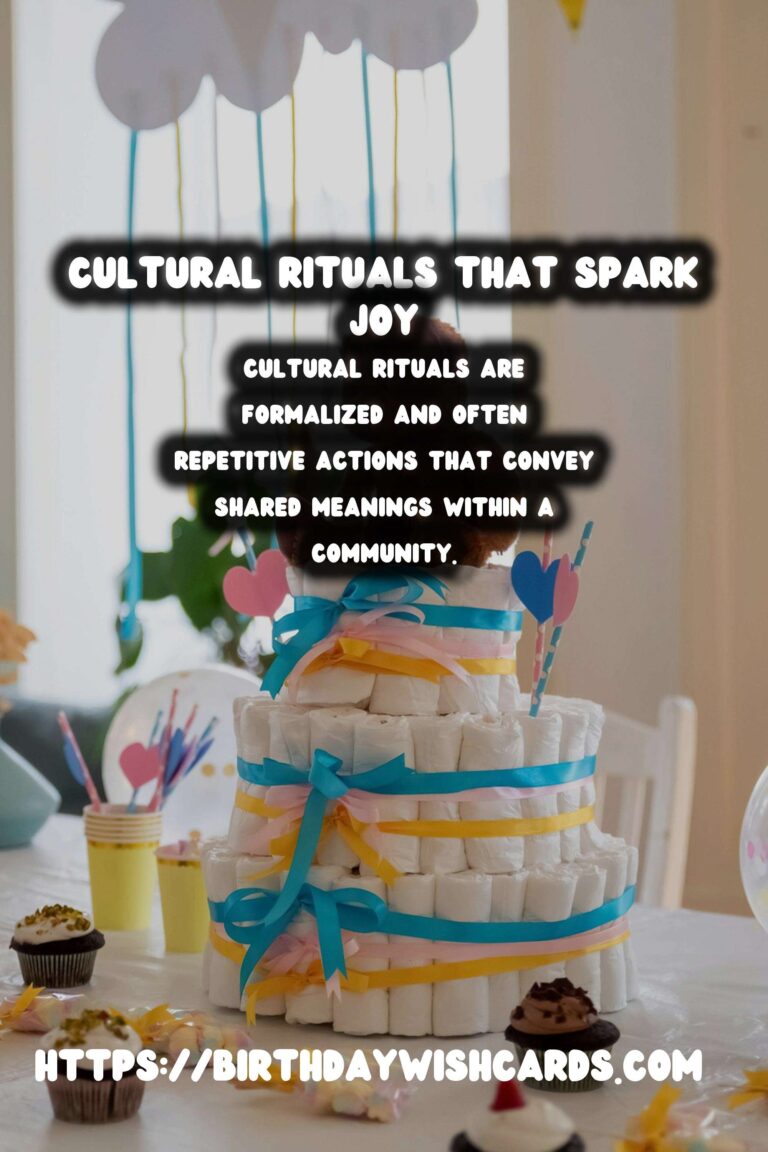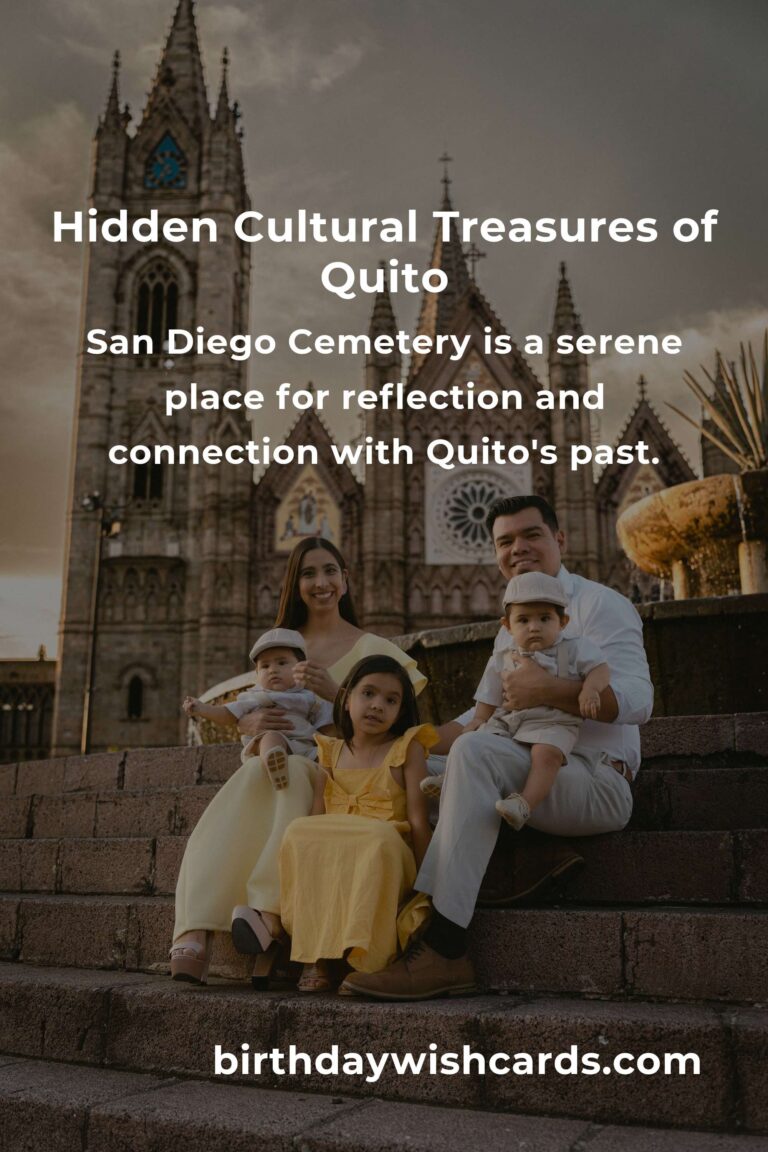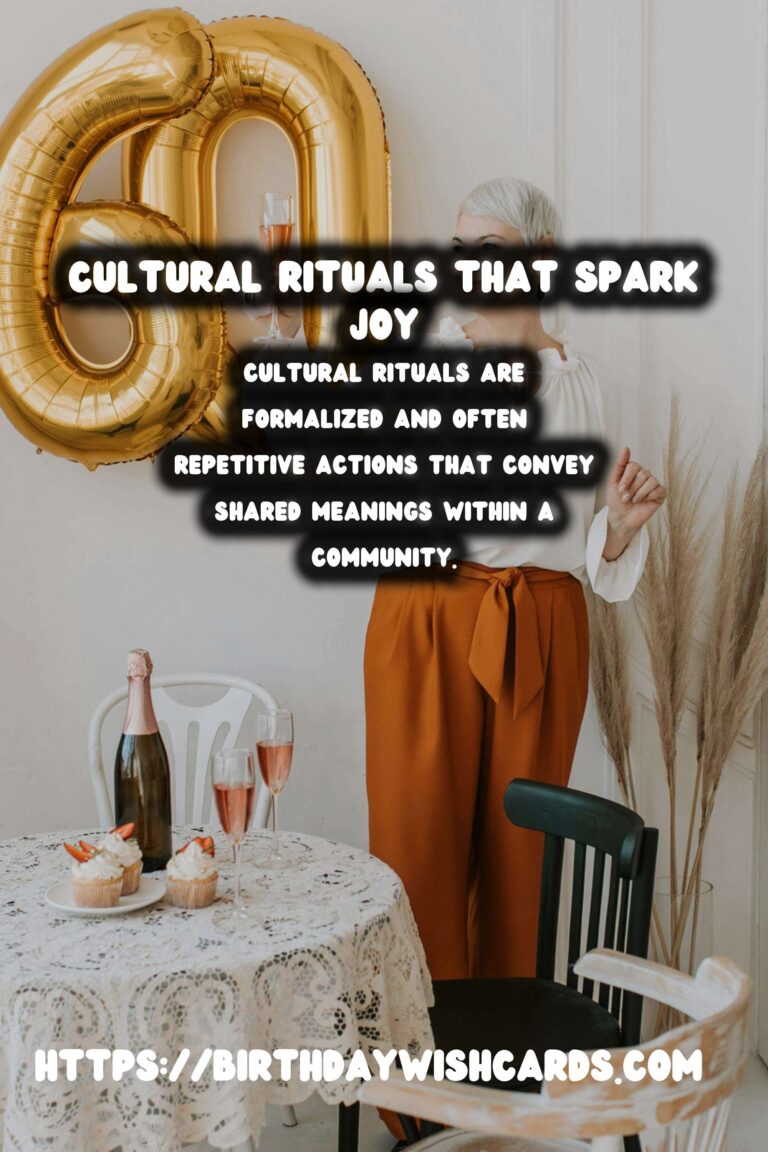
In a world that is constantly changing, cultural rituals serve as an anchoring point to our identities, values, and traditions. They create a sense of belonging and can profoundly influence our emotional well-being. In this article, we will explore how to plan cultural rituals that not only maintain heritage but also spark joy in participants’ lives.
Understanding Cultural Rituals
Cultural rituals are formalized and often repetitive actions that convey shared meanings within a community. They can range from daily practices to annual celebrations. Understanding the essence of cultural rituals is key to planning one that resonates joyfully with participants.
Step 1: Identify the Purpose of the Ritual
The first step in planning a cultural ritual is to identify its purpose. Are you looking to commemorate a life event, celebrate a season, or bring the community together?
- Life Events: Births, weddings, and memorials.
- Seasonal Celebrations: Festivals marking the changing of seasons or holidays.
- Community Building: Events that foster togetherness and connection.
Step 2: Engage Stakeholders
Once you’ve identified the purpose, engage stakeholders who are part of or affected by the ritual. This could include family members, community leaders, or participants. Their input is invaluable in shaping the ritual.
Conduct discussions or surveys to understand what elements are meaningful to them. This inclusivity will foster a sense of ownership over the ritual.
Step 3: Choose Symbols and Practices
Choose symbols and practices that resonate with the chosen purpose. Symbols can include colors, objects, or motifs that represent your culture.
Consider integrating traditional practices that hold significance in your community. This can involve music, dance, prayers, or food that evoke joy and celebration.
Step 4: Select the Right Time and Venue
The timing and location of the ritual are equally important. Choose a date that holds significance for your community or is convenient for participants.
For the venue, look for a place that embodies the essence of your ritual. This could be a community center, a natural setting, or even someone’s home.
Step 5: Create an Inviting Atmosphere
The environment in which a ritual takes place greatly affects the experiences of those involved. To create an inviting atmosphere, consider:
- Using decorations that reflect the cultural significance of the ritual.
- Incorporating elements like music or scents that stimulate positive emotions.
- Ensuring there is enough space for participants to engage freely.
Step 6: Involve Everyone
Everyone should feel included in the ritual, regardless of their background or familiarity with the culture. This inclusivity can be achieved through:
- Offering explanations of the ritual practices.
- Encouraging participation through activities and roles.
- Having materials available that provide further insight into the cultural significance.
Step 7: Document and Reflect
After the ritual, take time to document the experience. This can include photographs, videos, or written reflections from participants. Documenting allows you to create a memory archive that can be cherished for years to come.
Encourage participants to share their thoughts on the experience. Feedback can be used to improve future rituals and ensure that they continue to spark joy.
Step 8: Foster Continuity
Cultural rituals are often most impactful when they are repeated. Encourage regular gatherings to build upon the initial experience. This can create a tradition that evolves while retaining its cultural significance.
Conclusion
Planning a cultural ritual that sparks joy involves thoughtful consideration of purpose, participation, and environment. By following the outlined steps, you can create an enriching experience that resonates deeply with your community and reinforces cultural values.
As you embark on this journey, remember that the most important aspect is the joy and connection fostered among participants. Cultural rituals are not just acts; they are experiences that allow us to honor our heritage while actively creating joy in our lives.
Cultural rituals are formalized and often repetitive actions that convey shared meanings within a community. The first step in planning a cultural ritual is to identify its purpose. 
